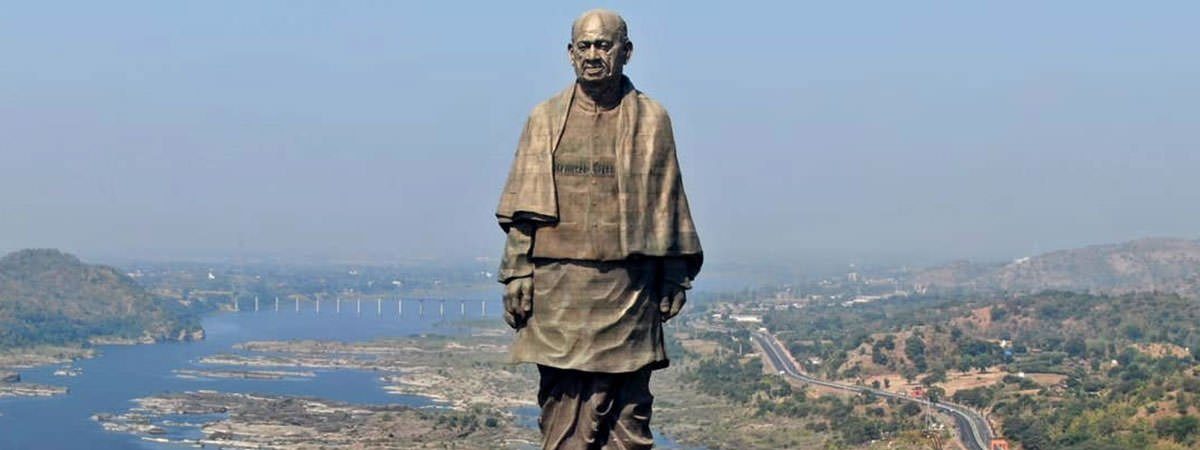Sardar Vallabhbhai Jhaverbhai Patel is counted among the greatest figures in the political history of modern India. He was born in Nadiad, in the countryside of the state of Gujarat in India, on October 31, 1875. A prodigious and brilliant student, Sardar Patel chose to be a barrister by profession and went on to become one of the most successful practitioners in Ahmedabad, Gujarat. As the political climate of India heated up with demands of Swaraj (self-rule), Patel joined active politics in 1917. He soon came under the wing of Mahatma Gandhi and the Indian National Congress. Over the next few decades leading to the independence of India (15th August, 1947), Patel established himself as a leader of the people playing a pivotal role in the success of the Indian Independence struggle. Among his most important accomplishments is successfully forging a united India from over 500 self-governing princely states. Post independence, Sardar Patel held the honor of being the first Home Minister and Deputy Prime Minister of India, positions he held until his death on December 15, 1950. His commitment to national integration in the newly independent country was total and uncompromising, earning him the sobriquet “Iron Man of India”. Vallabhbhai Patel is also considered as the Father of the Indian Civil Services and has been conferred with the highest civilian honor in India, the Bharat Ratna (jewel of Bharat or India). In 2018, the Government of India gave another tribute to Patel by unveiling the Statue of Unity, the world’s tallest statue. Know more about the numerous contributions of Sardar Patel to India through his 10 major achievements.
#1 HE SUCCESSFULLY ORGANIZED KHEDA SATYAGRAHA OF 1918
The Kheda district in present day Gujarat was part of the Bombay Presidency in British India. The Chhappania Akal (famine) of 1899-1900 and subsequent famines had ruined the agrarian economy of the region and driven it towards poverty. In 1918, the region was facing famine again and a plague epidemic had killed 17000 in Kheda alone, leading to widespread distress in the area. At such a time, the British increased the taxes in 1917-18 by 23%, leading to widespread discontent. Vallabhbhai Patel had by now been elected as the secretary of the Gujarat Sabha, a public body with close ties to the Indian National Congress. With the help of other congress volunteers like Narhari Parikh, Mohanlal Pandya and Ravi Shankar Vyas; Patel travelled from village to village organizing a massive “No Tax Campaign” against the British rule. The campaign urged the farmers to secure exemption from payment of the land revenue assessment in wake of the famine in Kheda. Led by Patel, the peasants of Kheda signed a petition and called for tax to be scrapped. Three months of intense campaigning was marked by a severe government response which included arrests; and seizures of numerous goods including chattels and livestock. The Kheda Satyagraha was a well-organized and disciplined revolt that successfully mobilized and united all the castes and creeds of the region. It resulted in the Government reaching an agreement for both the parties, where tax for the current year and next year was suspended and all confiscated property was returned. It also put into limelight the capabilities of Vallabhbhai Patel as a leader.
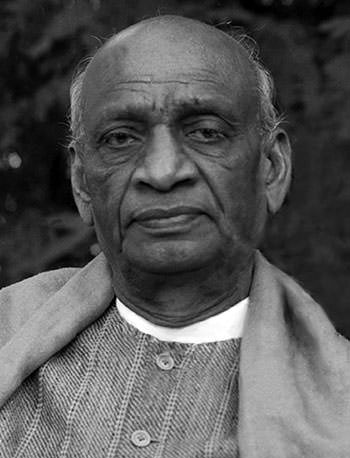
#2 HE PLAYED AN IMPORTANT ROLE IN THE NON-COOPERATION MOVEMENT
India’s unbridled support to the British effort during the First World War had made Indian leaders believe that they would be aptly rewarded with a major move towards independence, or at least self-government. But the British attitude changed as the war drew to an end. To contain any possible reaction, the oppressive Rowlatt Act was enacted in February 1919, which enabled the British to jail any suspects for as long as two years without trial, and to try them without any jury. In a reaction towards such oppressive policies and the Jallianwala Bagh Massacre of April 1919, Mahatma Gandhi launched the Non-Cooperation Movement on 4th September, 1920. The movement aimed to induce the British government of India to grant self-government, or Swaraj, to India. Vallabhbhai Patel supported Gandhi’s peaceful and non-violent protest and regarded the Non-Cooperation Movement as a feasible alternative to revolutionary terrorism to fight the colonial government. He helped to spread the movement in Gujarat, recruited more than 300,000 members and raised over Rs.1.5 million in funds. Once a follower of Western fashion, Vallabhbhai Patel threw all his English-style clothes and switched completely to wearing khadi, the locally produced cotton clothing. In addition, he organized several bonfires of British goods. Apart from this, in Gujarat, he worked extensively in the following years against alcoholism, untouchability and caste discrimination; as well as for empowerment of women.
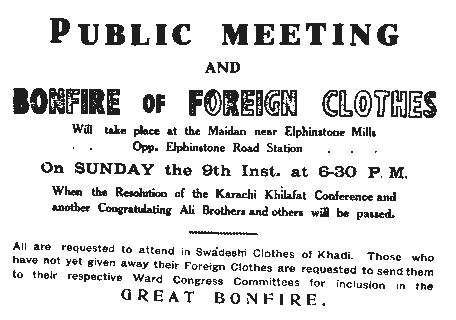
#3 HE HELPED DEVELOP CIVIC LIFE IN AHMEDABAD
In 1924, Vallabhbhai Patel was elected as the Municipal President of Ahmedabad and he served for three terms i.e. 1922, 1924 and 1927. In his association with the Municipal Committee, his tenure was marked by improvements in infrastructure; increment in the electricity supply; improvement of water supply; extension of drainage and sanitation system; and town planning programs across the city. Besides, the educational institutions underwent major reforms and voices were raised for the recognition and payment of teachers employed in schools which were independent of British control. He was also successful in creating unity and trust among the people, who despite falling into different caste and community and divided by socio-economic lines, were united for a greater cause. In the aftermath of the torrential rainfall of 1927, he personally led relief efforts and established refugee centers across the district; mobilized volunteers; and arranged for supplies of food, medicines and clothing as well as for emergency funds from the public and the government.
#4 HE SUCCESSFULLY LED THE BARDOLI SATYAGRAHA OF 1928
In 1928, the Bardoli taluka in Bombay Presidency (present day Gujarat) was suffering the effects of flood and famine, which had gravely affected the financial situation of the farmers. However the government had raised the taxes by 30 percent in that year, and refused to roll back the rise despite petitions by civic groups. The revenue hike was steeper than it had been in Kheda even though the famine covered a large portion of Gujarat. Vallabhbhai Patel returned to the independence struggle from his municipal duties in Ahmedabad, taking command and writing to the Governor of Bombay. Once his request was ignored Patel instructed the farmers to refuse payment of the taxes and organized a non-violent revolt with the help of his colleagues. Despite arrests and seizures of property and land, the struggle intensified. The properties were put up for auction but hardly anyone came forward to buy them. After 6 months of intense campaign and struggle, the Government agreed to restore the confiscated lands and properties as well as to cancel revenue payment for the year, and further cancel the 30% raise until the next year. The success of the movement further propelled Vallabhbhai Patel to prominence as a leader of the people. As the peasant community celebrated, Mahatma Gandhi on behalf of the women of Bardoli conferred the title of Sardar upon Vallabhbhai Patel; which refers to a “chief” or “leader” or “headman” in Gujarati and several other Indic languages.

#5 HE BECAME PRESIDENT OF INDIAN NATIONAL CONGRESS IN 1931
The Bardoli Satyagraha had aided in the resurrection of the freedom struggle nationwide and Sardar Patel was now a prominent leader in the Indian National Congress (INC), the party that was at the forefront of the freedom movement in India. In 1930 after being briefly arrested during Mahatma Gandhi’s Salt Satyagraha against British Salt monopoly, Sardar Patel was provisionally appointed as the President of INC. A year later, in 1931, during the Karachi session of the INC, he was elected as the 49th President of Indian National Congress. During his term, Patel was committed to protect fundamental rights and human freedom; and envisioned India having equality before law and of opportunity. He sought reforms in land revenue; relief from agricultural indebtedness; and improvement in working conditions and wages of laborers. The Karachi Session presided over by him with its political and economic program spelled out for the first time what Swaraj would mean for the masses. Now at the highest level in Congress, Patel continued to play a crucial role in the organization in the future; which included raising funds; selecting candidates; and determining its stance on issues and opponents.
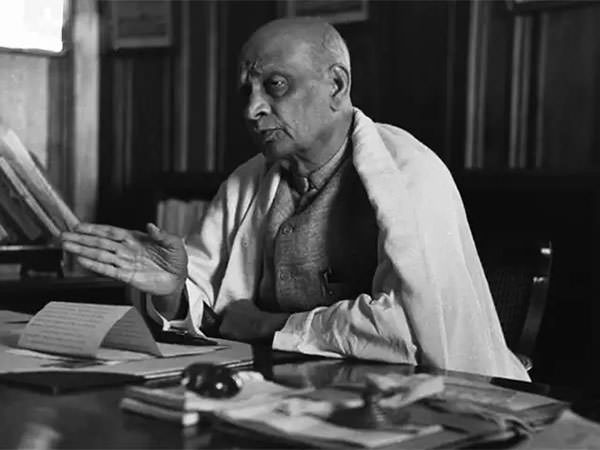
#6 HE BUILT THE BASE FOR THE CIVIL DISOBEDIENCE MOVEMENT OF 1942
In March 1942, in the backdrop of the Second World War and a threat of Japanese invasion looming over the Indian subcontinent, the British Government sent a delegation to India under Stafford Cripps. The purpose of the Cripps Mission was to obtain total co-operation of INC during the war in lieu of progressive distribution of power from the Crown and the Viceroy to an elected Indian Legislature. The Cripps proposals were essentially offering limited dominion status and did not address the definition of the powers to be relinquished. This resulted in the talks failing and a disappointed Mahatma Gandhi strongly recommended an all-out campaign of Civil Disobedience. Sardar Patel unwaveringly participated in Gandhi’s call when many notable leaders criticized Mahatma Gandhi’s decision to launch the movement. Patel travelled throughout the country propagating the agenda of the movement in a series of heart-felt speeches. He asked people to refuse to pay taxes and to participate in civil disobedience, mass protests as well as to shutdown all civil services. Patel’s speeches were instrumental in electrifying nationalists, who had been highly skeptical of the proposed rebellion by then. Moreover, Patel’s organizing work and building a second line of leadership in this period is credited for ensuring the unparalleled success of the rebellion across India. On August 8, 1942, the Quit India Movement was launched by Mahatma Gandhi with the slogan of “do or die”, demanding an end to British Rule of India. On 9th August, Patel was arrested. He was imprisoned with the entire Congress Working Committee from 1942 to 1945 at the fort in Ahmednagar. Although Quit India Movement was short-lived in the absence of the top leadership, it garnered rampant revolutionary activities across India. When Patel was released on 15 June 1945, he realized that the British were preparing proposals to transfer power to Indians.
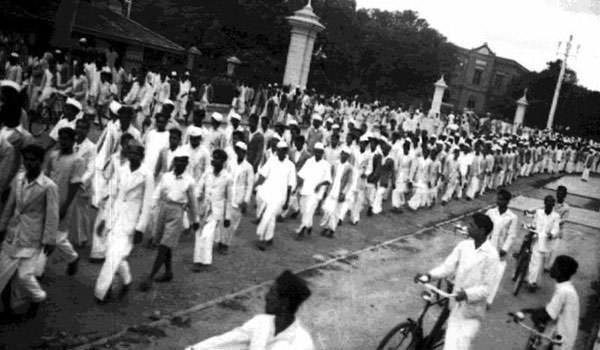
#7 HE PLAYED A PIVOTAL ROLE IN INTEGRATING THE PRINCELY STATES INTO INDIA
Political, military, social and economic changes post World War II had paved the way for the Independence of India. Negotiations and talks came towards an end with the Mountbatten Plan of June 3, 1947 and all parties finally agreed on the partition of British India into India and Pakistan. The political challenge were the 565 princely states which were given the option of joining either India or Pakistan; or choosing independence. Sardar Patel led this uphill task of forging a united India. With V. P. Menon as his aide, he began lobbying with the princes and monarchs of the separate states to accede to the Indian government. Patel’s shrewd diplomacy, fabled powers of persuasion and judicious use of the threat of force, reaped fruitful result as he successfully persuaded 562 states to accede to India. Three states of Jammu and Kashmir, Junagadh and Hyderabad were however still wavering.
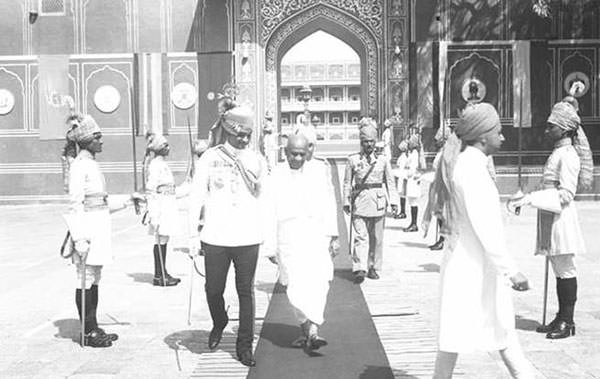
Junagadh’s subjects, who were about 80 percent Hindu, wanted merger with India, but its ruler Mahabat Khan III wanted to accede to Pakistan. The Indian supporters organized a revolt forming a temporary government in exile under Samaldas Gandhi. Meanwhile, Sardar Patel ordered the Indian army to cut off essential supplies to the state. The nawab soon realized that his reign was over and left Junagarh with all he could take with him. Junagarh was formally integrated into India after a plebiscite in its favor (99.5%) in February 1948.
Similarly in Hyderabad, Nizam Osman Ali Khan, sought independence or accession with Pakistan but its majority population wanted merger with India. The state was completely landlocked within the Indian Union, but the nizam rejected all sorts of negotiations with India. The ruler’s confidence was derived from his army of 22,000 and an estimated 2 lac more men in irregular forces. Sardar Patel ordered the Indian Army to invade Hyderabad and forcefully secure and integrate it into the Indian Union. In September 1948, 34000 Indian forces entered Hyderabad and the Nizam surrendered in 5 days.
Jammu and Kashmir with Raja Hari Singh ruling over a majority Muslim population decided on staying independent rejecting proposals from both sides. Frustrated with the Raja, Pakistan launched an invasion of Kashmir with the help of Pashtoon tribal militia in September 1947. Sardar Patel refused to help unless that Kashmir’s monarch acceded to India, which he did and the Indian Army promptly stopped the invasion. This total and uncompromising commitment to national integration in the newly independent country earned Sardar Patel the sobriquet “Iron Man of India”.
#8 HE SERVED AS THE FIRST HOME MINISTER AND DEPUTY PRIME MINISTER OF INDIA
By 1946 it was apparent that India’s Independence was round the corner. The Provincial elections held in that year saw the Indian National Congress winning substantial support. The post of the Congress president thus became very crucial as it was this very person who was going to become the first Prime Minister of independent India. Mahatma Gandhi made it ample clear that Nehru was his preferred choice, but the later received not a single nomination from the 15 state/regional congress committees. Sardar Patel received 12 making him the preferred choice but keeping in line with the Mahatma’s wishes, Patel refused the position. Vallabhbhai Patel was thus appointed the first Home Minister and Deputy Prime Minister of Independent India. He represented India in the Partition Council and oversaw the division of public assets. He was a leading light in the Constituent Assembly of India and played a pivotal role in the appointment of Dr. Bhimrao Ramji Ambedkar as the chairman of the drafting committee. Moreover, he helped the inclusion of leaders from across the political spectrum in the process of scripting the Indian constitution. Patel was also the chairman of the committees relating to minorities and fundamental rights.
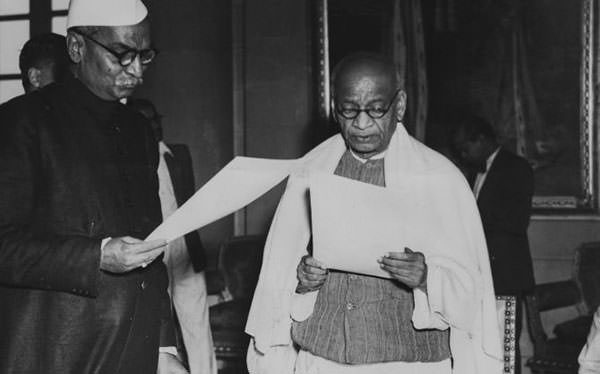
#9 PATEL IS REGARDED AS THE FATHER OF INDIAN CIVIL SERVICES
After India achieved its independence in 1947, the nation retained the pattern of the former Indian Civil Service of British India. However, Modern Civil Service was formed after the partition of India. It was Sardar Patel’s vision to create an All India Services. He, more than anyone else, realized the crucial role that civil services play in administering a country, in not merely maintaining law and order but also in running the institutions that provide the binding cement to a society. Article 312 of the Indian Constitution authorized the Rajya Sabha or the Upper House of Parliament to set up new branches of the All India Services. The Indian Administrative Service, Indian Police Service and Indian Forest Service have been established under this constitutional provision. The objective was preserve unity and integrity of the nation through a unified structure and standards of administration. Patel’s address to the probationers to maintain utmost impartiality and incorruptibility of administration is as relevant today as it was then: “A civil servant cannot afford to, and must not, take part in politics.” Due to his contribution to the present-day All India Administrative Services, Patel is regarded as “Patron Saint of India’s Civil Servants” and “Father of Indian Civil Service”. In a tribute to his role in creating civil services, more than 1,500 officers of India’s civil and police services gathered to mourn at Sardar Patel’s residence in Delhi a day after his death and pledged “complete loyalty and unremitting zeal” in India’s service.
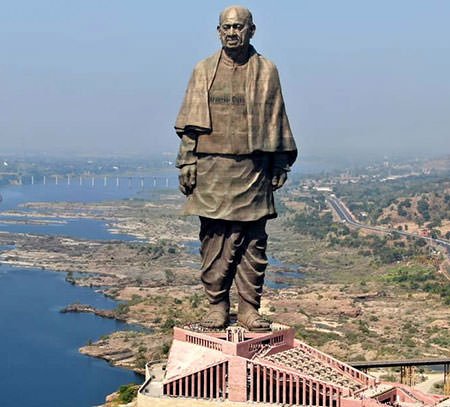
#10 HE WAS AWARDED THE BHARAT RATNA IN 1991
Sardar Patel has remained an icon and inspiration for millions of Indians decades after his death. In 1991, Sardar Vallabhbhai Jhaverbhai Patel was awarded the Bharat Ratna, the Highest Civilian Award in India from the Republic of India, albeit 41 years after his death in 1950. It was awarded in recognition of his exceptional service and performance of the highest order in shaping the Indian subcontinent. In 2014, the Government of India introduced Rashtriya Ekta Diwas (National Unity Day) which was inaugurated by Prime Minister Narendra Modi, the 14th prime minister of India. It is to be celebrated on 31 October every year as annual commemoration of the birthday of the Iron Man of India. On October 31, 2018, the 143rd anniversary of Patel’s birth, the Statue of Unity was inaugurated by Narendra Modi. At the height of 182 meters (597 feet), the monument dedicated to Patel is the world’s tallest statue. It faces the Narmada Dam, and is surrounded by an artificial lake spread across 12 km.

